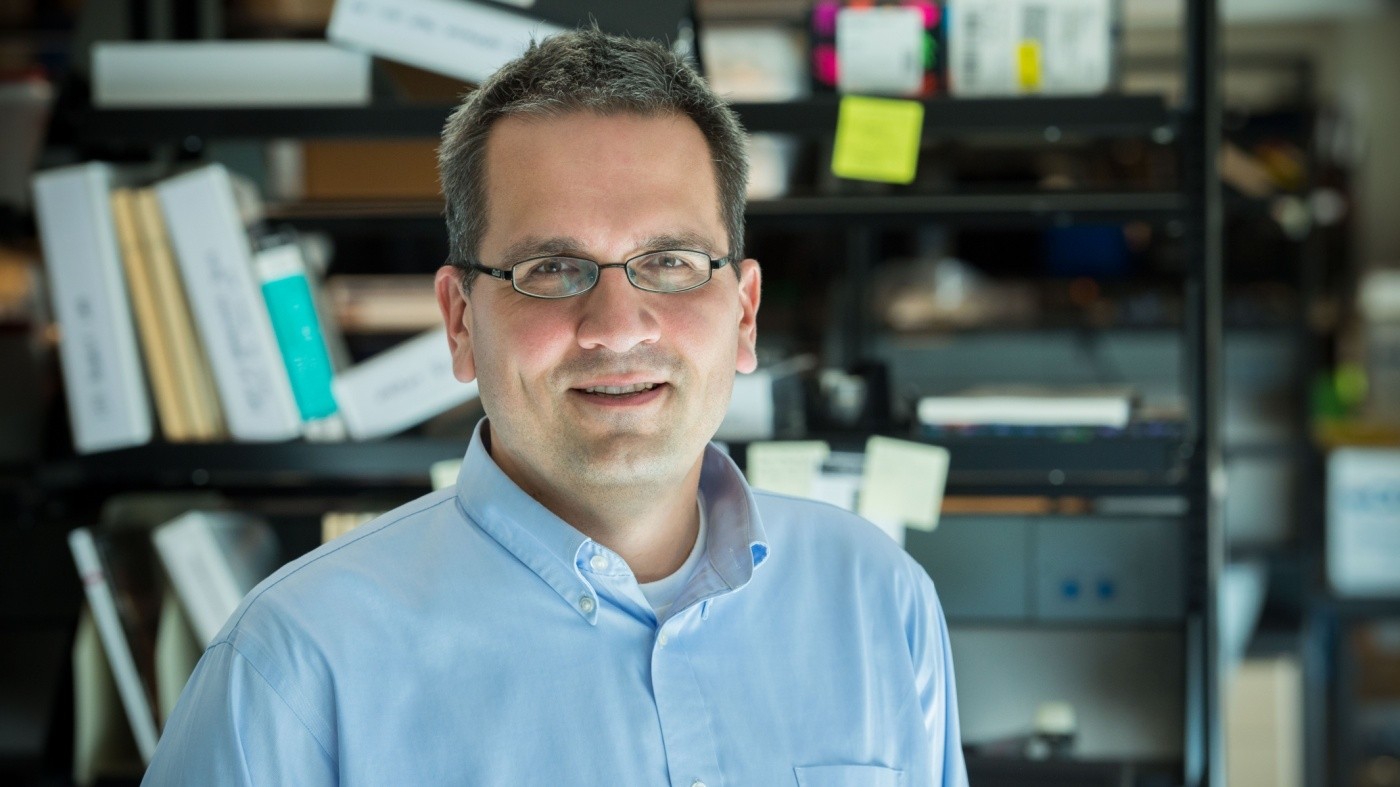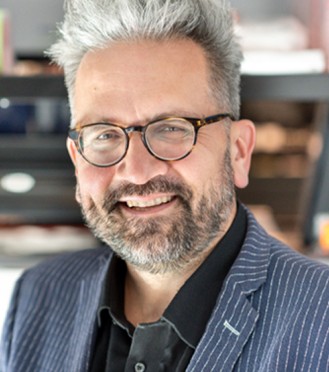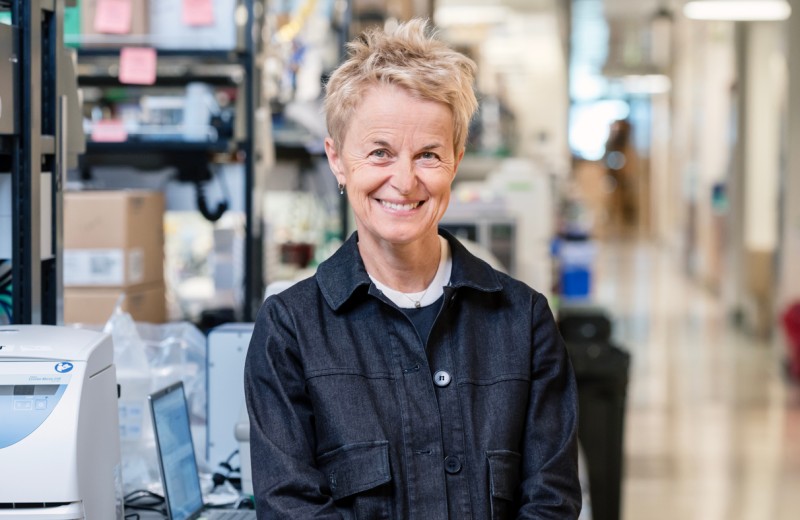Gladstone NOW: The Campaign Join Us on the Journey✕

Scientists in the laboratory of Nevan Krogan, PhD, and a team from UCSF developed a new gene-editing platform using CRISPR to make human immune cells resistant to HIV. [Photo: Chris Goodfellow, Gladstone Institutes]
Researchers at the Gladstone Institutes and UC San Francisco (UCSF) have used a newly developed gene-editing system to find gene mutations that make human immune cells resistant to HIV infection.
The team built a high-throughput cell-editing platform using a variant of CRISPR/Cas9 technology that allowed them to test how well scores of different genetic tweaks defended immune cells against HIV. The new system allows researchers to quickly modify the genetic code of freshly donated human immune cells and will hopefully accelerate the quest to finally cure HIV+ patients, the researchers said.
“This is an ability HIV researchers have wanted for a long time,” said postdoctoral researcher Judd F. Hultquist, PhD, one of the new paper’s co-lead authors. “I hope this will take what seemed like an insurmountable task a year ago and make it something everyone can do.”
The research, which was published online October 25, 2016 in Cell Reports, was conducted by the laboratories of co-senior authors Nevan J. Krogan, PhD, a professor of cellular and molecular pharmacology at UCSF, director of the Quantitative Biosciences Institute (QBI) in UCSF’s School of Pharmacy, and a senior investigator at the Gladstone Institutes, and Alexander Marson, MD, PhD, an assistant professor of microbiology and immunology in UCSF’s School of Medicine. The research was spearheaded by Hultquist, who is in Krogan’s lab, and Kathrin Schumann, PhD, a postdoctoral researcher in Marson’s lab.
Gene Editing Offers Possibility of HIV Cure
Despite great progress made since the 1980s in the ability to treat and control HIV with antiretroviral drugs, there is still no cure for the virus, and millions of people are newly infected every year. Once the virus infiltrates a patient’s immune system, it can hide indefinitely within cells’ own DNA, impossible to detect or destroy with current technology. As a result, patients must continue on antiretroviral drugs for the rest of their lives.
However, not everyone is susceptible to the virus. Scientists have taken inspiration from a group of individuals whose immune cells appear to be naturally resistant to HIV infection, and hope to one day edit HIV patients’ immune systems to mimic the biology of these HIV-resistant individuals.
“There have been lots of efforts to sequence the genomes of resistant people to discover the mutations that make them immune to the virus,” Hultquist said. “But there are many different genes that could be involved: some control the virus’s ability to enter immune cells, others control how the virus tricks cells into expressing its genes. Until now, there was no way to test which of these mutations actually confer resistance in primary human T-cells.”
CRISPR-Based Platform Aims to Accelerate Search for Cures
Despite being the immune system’s lead fighters, T cells are delicate—only able to survive outside the body for a couple weeks. They are also resistant to the viruses researchers use in other cell types to deliver DNA instructions about how to build the machinery needed for CRISPR/Cas9 gene editing. Last year, Marson and Schumann successfully used CRISPR to perform precise DNA sequence replacements in primary human T cells for the first time by prefabricating the CRISPR machinery in test tubes, then adding it to the freshly donated immune cells.
“It’s incredibly fast,” Schumann said. “The desired editing occurs rapidly, and then the cell degrades the CRISPR machinery so it can’t go on making changes. That’s really important: otherwise it’s like doing surgery and leaving in the scalpel.”
In the new paper, Schumann and Hultquist improved the technique by devising an automated system for high-throughput, parallel editing of T cells. The new approach enables the researchers to mutate different candidate genes in hundreds of thousands of T cells from healthy volunteers, expose these mutant cells to the HIV virus, then screen through the cells to find which mutations were able to prevent infection.
A key feature of this system is its speed, as donated T cells can only survive outside of the body for two to three weeks. “If we want to start editing T cells and putting them back into people as a therapy,” Krogan said, “I think this will be the gold standard for how to do that quickly, safely, and efficiently.”
The researchers used the new technique to mutate the genes CXCR4 and CCR5, which encode receptor molecules that different strains of the HIV virus use to sneak in and infect immune cells and which have been targeted in previous cell therapy trials. Inactivating either of these genes successfully blocked HIV infection of the human T cells by the relevant HIV strain.
Additional experiments showed the feasibility of creating a two-layer security system for T cells by simultaneously blocking a gene the HIV virus needs to gain entry into cells and a gene the virus needs to survive and reproduce within the cell, resulting in doubly secure resistance.
To demonstrate the efficiency and power of the new high-throughput technology, the researchers also developed 146 different CRISPR-based edits, each designed to deactivate one of 45 genes linked to HIV’s ability to integrate into host cells. They identified several genes whose absence conferred HIV resistance, some of which had been predicted by previous studies and others that had never been directly tied to HIV infection before.
‘Tip of the Iceberg’ for Infectious Disease Research
The researchers plan to use the new platform to identify additional weaknesses in the HIV virus’s life cycle that could be exploited either by cell therapy or targeted drugs. They also want to be able to insert more subtle mutations, such as those reported in HIV-resistant individuals, which could alter cell function just enough to confer resistance but without fully deactivating the gene and impeding cell function.
However, their greater hope is that the system will have much broader applications than just HIV and eventually be used in labs around the world to study the virus of their choice.
“This toolkit has been a huge missing piece in infectious disease research,” Marson said. “Now we have the ability to make modifications in human immune cells and right away see the effects. The potential is immense—this is just the tip of the iceberg.”
Want to Join the Team?
Our people are our most important asset. We offer a wide array of career opportunities both in our administrative offices and in our labs.
Explore CareersBeyond Viruses: Expanding the Fight Against Infectious Diseases
Beyond Viruses: Expanding the Fight Against Infectious Diseases
The newly renamed Gladstone Infectious Disease Institute broadens its mission to address global health threats ranging from antibiotic resistance to infections that cause chronic diseases.
Institutional News News Release Cancer COVID-19 Hepatitis C HIV/AIDS Zika Virus Infectious DiseaseCharting the Body’s Defense Against HIV Leads to Broader Immune Revelations
Charting the Body’s Defense Against HIV Leads to Broader Immune Revelations
Gladstone scientists created a new tool to understand the immune system’s inner workings when confronted with a virus.
Research (Publication) HIV/AIDS Infectious Disease Roan LabThe Audacity of Hope: Stories of Resilience and Empowerment | World AIDS Day 2024
The Audacity of Hope: Stories of Resilience and Empowerment | World AIDS Day 2024
Rewatch The Audacity of Hope, a powerful webinar hosted in honor of World AIDS Day 2024.
HIV/AIDS Ott Lab




